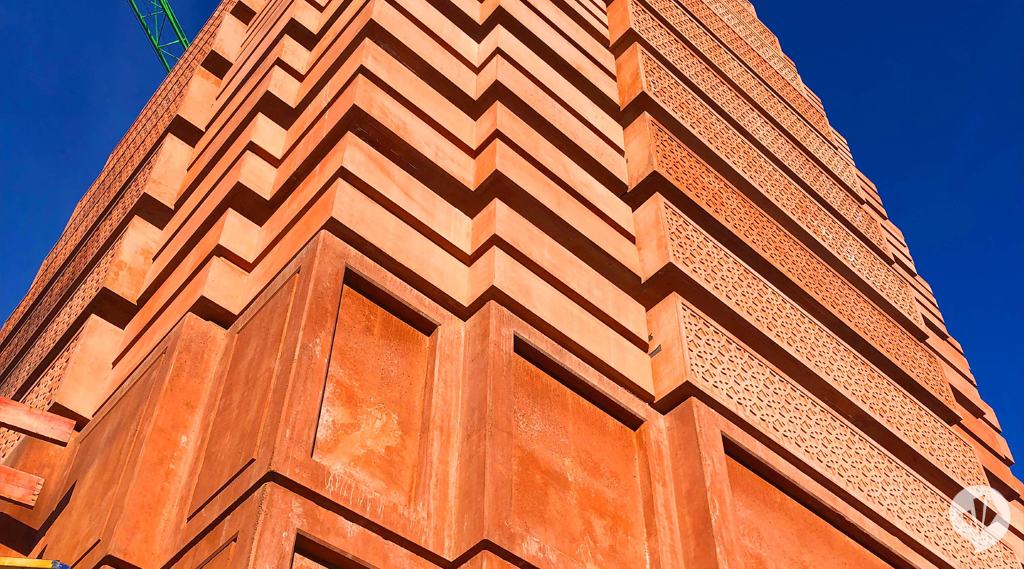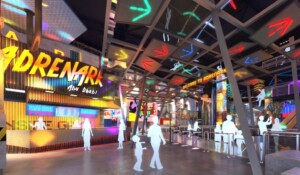dan pearlman, a leading brand and experience architecture group, was responsible for the complete architectural design and landscape design as well as the interpretive design for Indian rhinos in the German capital. This will feature environmentally enriching activities for both animals and visitors, using creative and immersive design.
The new construction of Berlin Zoo’s rhinoceros enclosure will ensure that the area conforms to modern animal welfare principles, presenting the animals in their natural habitat. The rhinos will now live inside an Indian-style pagoda and an exotic, marshy landscape together with warty pigs and tapirs. The architecture and external layout of the rhinoceroses’ facility as well as the interpretive design has been designed by the architecture specialists dan pearlman.
Habitat construction, which also includes boggy areas for wallowing and numerous bathing pools, is expected to cost approximately €20m, of which €13.7m is being provided by the State of Berlin. The new 14,000-square metre enclosure, complete with an underwater bathing area that can be observed through the large armoured glass, allows the zoo’s guests to get closer to the animals than ever before.
A natural habitat
In the interior area, the rhinoceros and warty pigs will inhabit an enclosure with natural flooring, while the tapirs will be housed in an adjoined enclosure. The entire interior of the rotunda will be covered by an EFTE foil roof, which is UV-permeable, meaning that the animals can enjoy generous free-range areas with plenty of daylight.
The pagoda will also be surrounded by lush outdoor areas, with high grass and idyllic streams in the shade of the zoo trees.
Since the first stone of the pagoda was laid in late summer last year, the construction site has been a hive of activity. Less than 12 months later, the finishing touches are being made to the centrepiece of the new habitat, a 25-metre-tall tower, which consists of 68 stacked concrete elements weighing up to 10 tons each, topped with a spire made of golden, yellow-painted metal. The design echoes some of the zoo’s historical buildings, like the Elephant Pagoda, which was destroyed during WWII.
“The rhino pagoda is an ode to biodiversity and the protection of endangered animal species,” says zoo director Dr Andreas Knieriem. “At the same time, we follow our now 175-year tradition and create an installation that fits perfectly into our zoo characterised by the style of some of our other instalments.”
Celebrating the construction
At a ceremony celebrating the placing of the cornerstone, a time capsule was set into the building’s foundations by Knierman, Senator Pop, chairman of Berlin Zoo’s Supervisory Board Frank Bruckmann and dan pearlman CEO & creative director, Kieran Stanley.
The capsule includes an animal habitat sign, building plans, a copy of the funding approval, and a myriad of well-wishes for the endangered Indian rhinoceros in the form of artworks and handicrafts.
Knieriem says: “According to current estimates, there are only around 2,600 Indian rhinoceroses left in the wild. When this time capsule is opened sometime in the future, we naturally hope that this number will be much higher. It is worth taking this sometimes-arduous path for the sake of our animals and the protection of other members of their species in the wild.”
Pop says: “We regard a special construction project like this, at the heart of the City West area, as a sensible and sustainable investment – not only for the future of our long-standing zoo but also for Berlin as a tourist destination.”
The tower at the heart of the new habitat will contain a wishing well where visitors can make a direct contribution to saving the rhino species. All donations will be channelled into species conservation projects, including for the protection of rhinoceroses living wild in the Indian state of Assam.
The structure is envisioned to be completed this autumn, to be followed by a period of acclimatisation for the animals. Zoo guests will be able to explore the new world of Indian rhinos, tapirs and warty pigs from spring 2023.
dan pearlman is involved with a major conservation design project on the North Coast of Germany, helping with the long-term development of Zoo am Meer Bremerhaven.


















